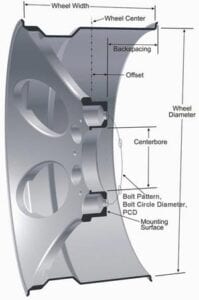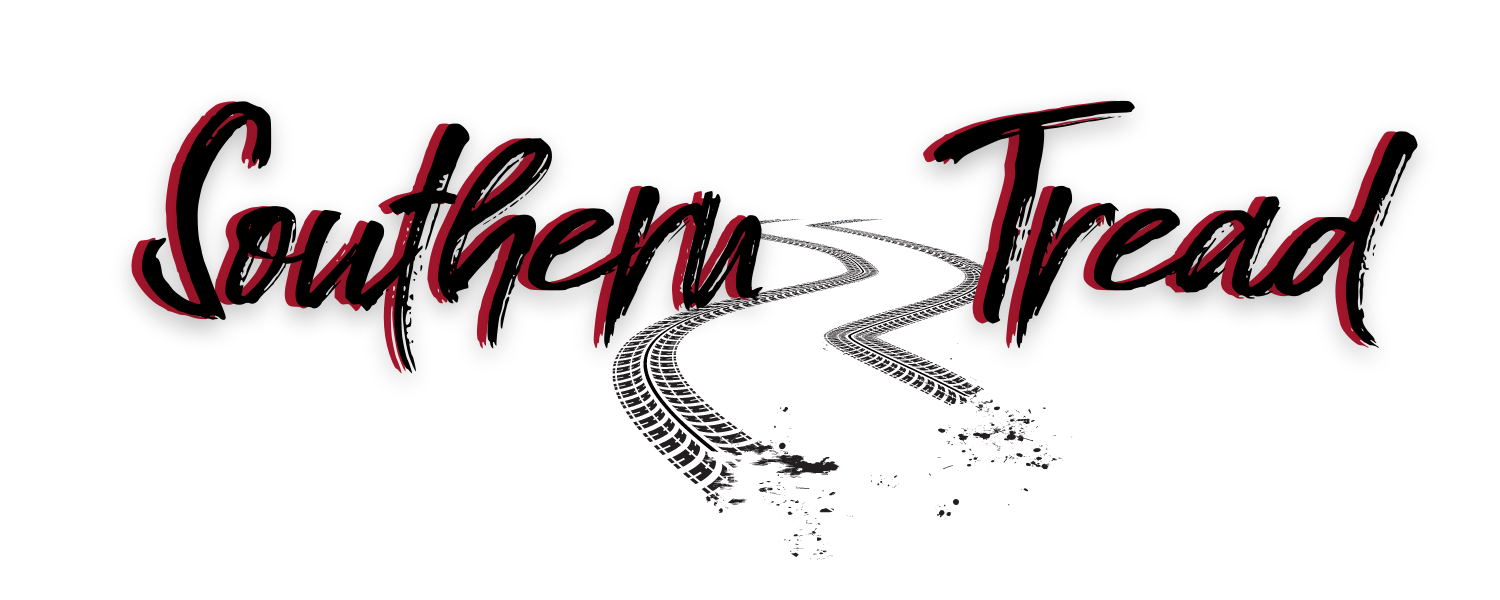FAQ
Southern Tread Information
Q: How do I handle a warranty claim?
Q: Are you inquiring about a sponsorship or custom build support?
Email us with your proposal.
General Wheels Information
Q: What is the best way to take care of my new wheels?
Q: What are the different methods of making wheels?
In today’s marketplace, steel and aluminum are the most common wheel materials. Steel wheels are made in two pieces. The inner piece, which is called the center, bolts on to the car. The outer piece is known as a barrel and receives the tire. The two pieces are welded together to form the wheel. Most original equipment wheels are made this way. Many aftermarket wheels are created this way as well, especially ones made for trucks. Steel is durable and easy to repair. For these reasons, it has remained a popular material for wheel manufacturing. The other material, aluminum, is by far the most popular type of wheel we sell. Its light weight, superior heat dissipation, and seemingly endless design variations make it the material of choice for most buyers. Aluminum wheels can be manufactured in many ways, and each method offers advantages.
- One-piece cast wheels
Pouring molten aluminum into a mold creates a cast wheel. The metal then takes the mold’s shape as it cools and hardens. There are three types of casting methods: low pressure/gravity, counter pressure, and high counter pressure molding (HCM). Each method has its place in today’s market. A wheel manufacturer will select a particular method according to the weight, strength, and finish that they have specified for that design. Naturally, the more sophisticated and costly methods produce lighter and stronger wheels but at a higher price. - FlowForm
A FlowFormed wheel starts out the same as a cast wheel, but with a noteable exception in the barrel. The barrel is spun, heated and then pressed between steel rollers that pull the rim to its final width and shape. This create a lighter and stronger rim compared to regular cast wheels, but without the expense of a forged wheel. - Forged / Billet wheels
The two words “forged” and “billet” have become synonymous. However, the manufacturing process is called forging, while the material used is a billet. Billet is the term used for a solid piece of dense aluminum. The forge, a huge machine that exerts thousands of pounds of pressure on the metal, basically presses or rolls the billet into its fundamental form. This forging is then machined to a final finish. This process allows wheels to be built with much less material. This results in lighter weight and unique designs, because the process creates a much stronger wheel than other methods. - Multi-piece wheels
The processes mentioned above can be combined to produce a wheel of a particular strength and weight at a particular price. For example, some wheels have a cast aluminum center, welded to a steel outer, or barrel. Another type of two-piece construction features a billet center welded to a rolled outer (extruded aluminum rolled into a hoop). Still other wheels feature a split outer so that widths and offsets can be made to custom specifications. This last method is the three-piece type construction. In this type of wheel, the center can be cast, billet or forged, and is usually attached to the outer assembly by special screws or rivets.
Q: What is Centerbore, Backspacing or Offset?

Backspacing:
The distance from the mounting surface to the back of the wheel.
Bolt Pattern, Bolt Circle Diameter:
The Bolt Pattern is the diameter of an imaginary circle that goes through the center of the bolt holes. Examples are 4×100 mm, 5×4.5 in, 6×5.5 in, 8×170 mm.
Centerbore:
The size of the hole in the back of the wheel that centers the wheel properly on the hub of the car. Many aftermarket wheels will be drilled to a larger universal size, and uses hub rings to reduce the size to match the hub on the car for perfect centering. Generally speaking, a perfect hub size match and hub rings can be optional for vehicles that use lug nuts, but are absolutely required for vehicles that use bolts such as BMW, Mercedes, and VW.
Offset:
The distance from the centerline of the wheel to the face of the mounting surface of the wheel that contacts the hub. A simple way to understand offset, is the lower the offset, the more the wheel will stick out, likewise, the higher the offset, the more the wheel will tuck. For example, and Honda Civic generally uses around a +40mm offset. So if you put a +15mm offset wheel on the car, the wheel is likely to stick out about 1 inch.
Q: What features should I look for when buying wheels?
First and foremost, wheels are purchased for styling the vehicle. You’ve got to like how they look. Second, decide on the build method and quality. The discussion of manufacturing methods above was intended to inform you of the different ways wheels are made. Choose the manufacturing method you want at the price you are happy with. Finish quality is important, so demand a nicely finished wheel. Finally, decide on the price. We realize there are many tradeoffs between the various features and price and that’s why we carry a wide selection of wheels for every budget.
Q: What are the pros and cons regarding spacers and adapters?
In most cases, using a spacer (of greater than 3mm thickness) or an adapter means you will be using a wheel that was not designed to fit your vehicle. Unless you get the advice of a professional, this can cause trouble. An incorrectly fit wheel almost always leads to excessive wear on suspension parts, poor ride and potential mechanical failure. In the vast majority of applications, we do not recommend the use of these devices.
Q: What are hub-centric rings; do I need them?
Most aftermarket wheels are manufactured with a center hole that will fit a wide range of vehicles. The hub-centric ring is an installation tool used to help hold the wheel perfectly centered during installation. Use of a hub centric ring can help in reducing minor vibrations. Proper installation and torque sequence is required to correctly center a wheel with or without a hub centric ring.
Q: I just hit something in the road. How do I find out if my wheel is ok?
Take the wheel to a dealer for inspection as soon as possible. Following an incident, immediately inspect the wheel for damage. If you see any damage do not drive on the wheel. If you drive the vehicle and notice any vibration, pulling or other sensation previously unnoticed do not drive on the wheel. You should take the wheel to a dealer for inspection whether or not you see damage or feel anything unusual. Your dealer can advise if the wheel(s) needs to be replaced.
Q: How can I tell if my tires are directional and properly mounted/rotated?
Directional tires will have a rotation arrow branded on the tire’s sidewall. The arrow indicates the direction in which the tire should turn. Unless they are dismounted and remounted on their wheels to accommodate use on the other side of the vehicle, directional tires are to be used on one side of the vehicle and are intended to be rotated from the front axle to the rear axle. If different tire sizes are used on the front vs. rear axle, the tires become location-specific and prohibit tire rotation unless remounted.
Q: Where can I buy replacement center caps, cap screws, rivets, etc?
Q: How much are the wheels? How can I purchase?
We do not sell direct to the public. You will need to contact your local authorized dealer for pricing and ordering information. We have a dealer locator on our website if you need help finding a dealer near you. We have MSRP pricing for our wheels listed on our website.
Q: What is the finish and/or structural warranty on your wheels?
Please see the Warranty Page on our website for information on our warranty and how to handle a warranty claim.
Q: What wheels will fit my vehicle?
We have a configurator on our website that allows you to search for wheels by your vehicle year, make, and model. You can even preview the wheels on an image the vehicle. Click “SEARCH BY VEHICLE” in top navigation.
Q: Can I order wheels with custom paint?
Yes. For an additional charge, any of our wheels can be custom painted. We offer both paint and powdercoating depending on the color and finish requested. Please contact your local dealer to discuss pricing and ordering information.
